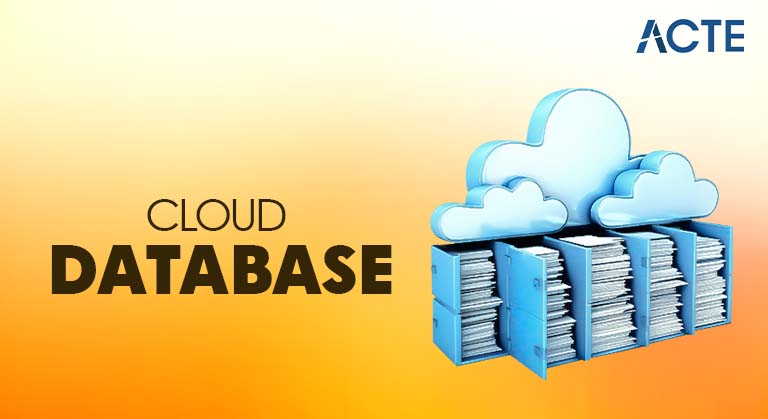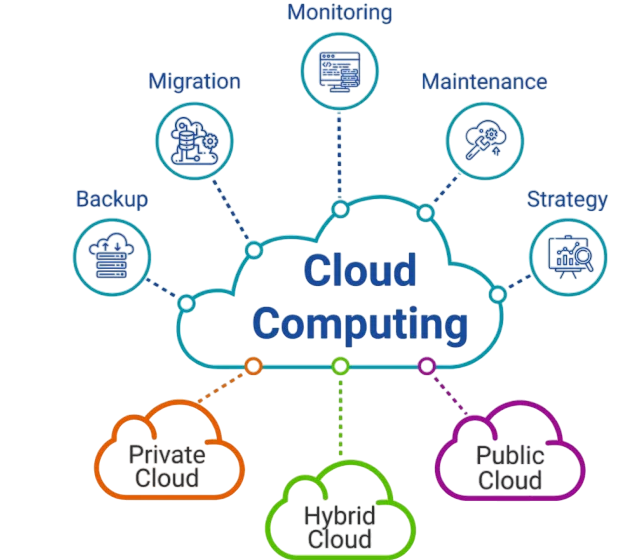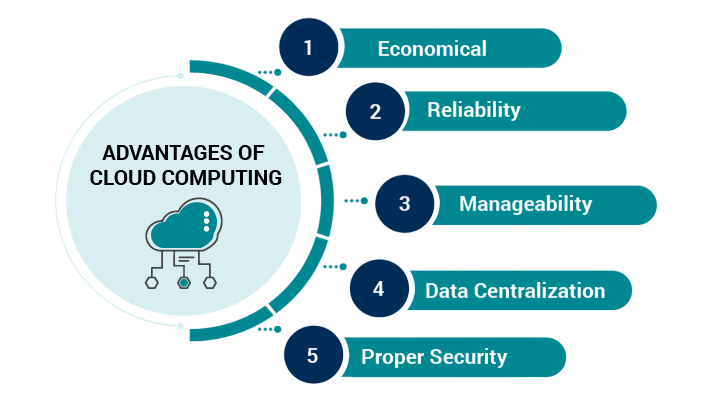
- Introduction
- What is a Cloud Database?
- Top Cloud Databases
- Cloud Database Use Case Examples
- Advantages and Disadvantages of Cloud Databases
- Cloud Database Career Growth
- Conclusion
Introduction
A cloud database is a kind of database provider that is built, deployed, and accessed via cloud computing platforms. Unlike conventional databases hosted on bodily servers, cloud databases are hosted on digital servers, permitting customers to control and scale factories and processing greater efficiently an infrastructure shift explored in Web Designing Training, where learners integrate scalable backend services with responsive front-end design. By leveraging cloud-native architecture, developers gain flexibility in resource allocation, automated scaling, and seamless deployment across global environments. These databases provide on-call for availability, excessive scalability, and decreased infrastructure costs. They may be accessed over the internet, permitting customers to carry out fact operations every time and anywhere. Cloud databases guide diverse fashions together with relational (SQL) and non-relational (NoSQL), and are typically provided as Database-as-a-Service (DBaaS) with the aid of using companies like Amazon Web Services (AWS), Microsoft Azure, and Google Cloud Platform. Their flexibility, automatic maintenance, and catastrophe restoration skills cause them to a perfect preference for contemporary-day organizations and packages that require excessive performance, security, and availability
To Earn Your Web Developer Certification, Gain Insights From Leading Data Science Experts And Advance Your Career With ACTE’s Web Developer Courses Today!
What is a Cloud Database?
A cloud database is a kind of database device hosted and controlled on a cloud computing platform. It lets in customers to store, control, and get right of entry to their facts over the Internet in place of counting on neighborhood hardware an architecture often managed through the AWS Command Line Interface, which enables developers to provision, configure, and monitor cloud-based databases directly from the terminal. By using CLI commands, teams can automate deployments, enforce security policies, and scale infrastructure without relying on graphical interfaces.

Data is saved on far flung servers maintained with the aid of using a cloud provider, supplying blessings together with price savings, scalability, and flexibility. Users can get right of entry to the database from anywhere, permitting far flung paintings and collaboration. Cloud databases additionally offer integrated safety features and further capabilities like automatic backups and facts analytics tools.
Top Cloud Databases
There are some outstanding selections available in relation to cloud databases an evolving infrastructure landscape explored in Master Configuration Management, where tools like Chef automate the provisioning and scaling of cloud-native environments. By integrating configuration management with cloud platforms, developers can orchestrate secure, scalable databases across AWS, Azure, and Google Cloud with consistency and efficiency.
- Amazon Aurora: A relational database from AWS compatible with MySQL and PostgreSQL. It combines enterprise-grade capabilities with cloud scalability and affordability. Known for high performance, automated scaling, and self-healing features ideal for demanding workloads.
- Google Cloud Spanner: A globally distributed, strongly consistent relational database. Offers horizontal scalability, high availability, and ACID compliance across regions. Its architecture enables automatic sharding and replication.
- Microsoft Azure Cosmos DB: A globally distributed, multi-model NoSQL database. Supports key-value, document, column-family, and graph models. Features include low-latency operations, auto-indexing, dynamic scaling, and SLAs for throughput, latency, and availability.
- IBM Db2 on Cloud: A fully managed relational SQL database with strong performance, scalability, and advanced analytics. Supports multiple data types and includes encryption, workload management, and automated backups. Integrates seamlessly with IBM cloud services.
- MongoDB Atlas: A fully managed document-based NoSQL database. Offers global distribution, strong consistency, and durability. Key features include automated backups, monitoring, horizontal scaling, and built-in security for data in transit and at rest.
- E-commerce: Cloud databases are widely used in e-commerce platforms to manage product catalogs, customer data, and transactions. They enable efficient inventory management, personalized recommendations, and streamlined order processing. Scalability ensures smooth performance during peak traffic events.
- Healthcare: Cloud databases play a vital role in healthcare systems by securely storing and managing patient records, medical images, and other health-related data. They support quick access to patient information, ensure data integrity, and enable interoperability across healthcare platforms for improved care delivery.
- Financial Services: Banks and insurance companies rely on cloud databases to handle large volumes of financial data. These databases offer secure storage for customer information, support real-time transaction processing, and help ensure compliance with regulatory standards critical to the financial sector.
- Internet of Things (IoT): With the rise of IoT devices, cloud databases are used to collect, store, and analyze data generated by sensors and smart systems. In smart home setups, for instance, cloud databases manage energy usage, security data, and other connected services remotely.
- Media and Entertainment: Cloud databases are employed for content management, digital asset storage, and distribution. They enable efficient metadata handling, content search, and seamless delivery of digital media across platforms.
- Scalability: Cloud databases offer the ability to scale resources up or down based on demand. This elasticity allows organizations to accommodate growth or fluctuations in data volume and user traffic without upfront hardware investments.
- Cost Efficiency: Operates on a pay-as-you-go model, where teams only pay for the resources they consume. This eliminates the need for large upfront infrastructure costs and enables cost optimization by scaling resources as needed.
- High Availability: Cloud databases typically provide high availability and uptime through replication and data redundancy across multiple servers and data centers. This ensures data remains accessible even during hardware failures or maintenance events.
- Disaster Recovery: These databases often include built-in backup and disaster recovery mechanisms. Data is backed up and stored in multiple locations, reducing the risk of loss. In case of a disaster, teams can quickly restore data and resume operations.
- Accessibility and Collaboration: Enables easy access to data from anywhere, allowing teams to collaborate across different locations. This boosts productivity, supports real-time data sharing, and facilitates remote work scenarios.
- Reliance on Internet Connectivity: Cloud databases require a stable internet connection to access and operate. When connectivity is limited or unstable, users may experience disruptions in accessing or updating data.
- Security and Privacy Concerns: Storing sensitive data in the cloud raises security and privacy considerations. Organizations must implement strong safeguards to protect data from unauthorized access, breaches, and leaks, while complying with relevant data protection regulations.
- Potential Vendor Lock-In: Migrating data and applications between cloud providers or back to on-premises infrastructure can be difficult and time-consuming. This may lead to vendor lock-in, limiting flexibility in switching providers or adopting hybrid cloud strategies challenges addressed in AWS Management Console, where developers gain centralized control over services, regions, and deployments.
- Data Transfer Costs: Cloud databases incur costs associated with data transfer between cloud and on-premises systems or across different cloud providers. These costs can accumulate when handling large volumes of data or frequent transfers.
Would You Like to Know More About Web Developer? Sign Up For Our Web Developer Courses Now!
Cloud Database Use Case Examples
Cloud databases have a huge variety of applications across diverse industries. Here are some examples of how cloud database services are utilized in real-world scenarios use cases often integrated with Web Designing Training, where developers learn to connect scalable cloud storage with dynamic front-end interfaces. From healthcare systems managing patient records to e-commerce platforms handling inventory and transactions, cloud databases enable secure, real-time access to critical data across sectors like finance, education, logistics, and media.
Advantages and Disadvantages of Cloud Databases
Cloud databases provide numerous blessings and disadvantages. Understanding those professionals and cons is critical for beginners exploring the ability of cloud databases an essential foundation covered in Role of Cloud in the Internet of Things, where learners examine how cloud platforms support IoT scalability, centralized management, and real-time analytics, while also addressing challenges like latency, security, and device vulnerability. This balanced perspective helps developers make informed decisions when architecting cloud-integrated IoT systems.
Advantages of Cloud Databases

Disadvantages of Cloud Databases
Are You Interested in Learning More About Web Developer? Sign Up For Our Web Developer Courses Today!
Cloud Database Career Growth
By utilising cloud databases, companies can lessen infrastructure costs, removing the need for on-premises servers and maintenance. Cloud databases facilitate handy collaboration and records sharing amongst teams, no matter their geographical locations. Additionally, cloud databases regularly have integrated safety features, which include encryption and everyday backups, to shield touchy information capabilities aligned with DevOps Certification for Career Growth, where professionals learn to automate cloud infrastructure, enforce security protocols, and manage scalable data systems. Mastering these skills empowers DevOps engineers to build resilient, collaborative environments across distributed teams. However, it’s critical to recall the capacity demanding situations and dangers related to cloud databases. Organizations have to cautiously examine their wishes and choose a good and stable cloud database provider that aligns with their requirements.
Conclusion
By utilising cloud databases, companies can lessen infrastructure costs, removing the need for on-premises servers and maintenance. Cloud databases facilitate handy collaboration and records sharing amongst teams, no matter their geographical locations. Additionally, cloud databases regularly have integrated safety features, which include encryption and everyday backups, to shield touchy information capabilities often paired with Web Designing Training, where developers learn to integrate secure backend services with responsive front-end interfaces. By combining scalable cloud infrastructure with design best practices, teams can build collaborative, data-driven web applications that are both user-friendly and resilient. However, it’s critical to recall the capacity demanding situations and dangers related to cloud databases. Organizations have to cautiously examine their wishes and choose a good and stable cloud database provider that aligns with their requirements.



